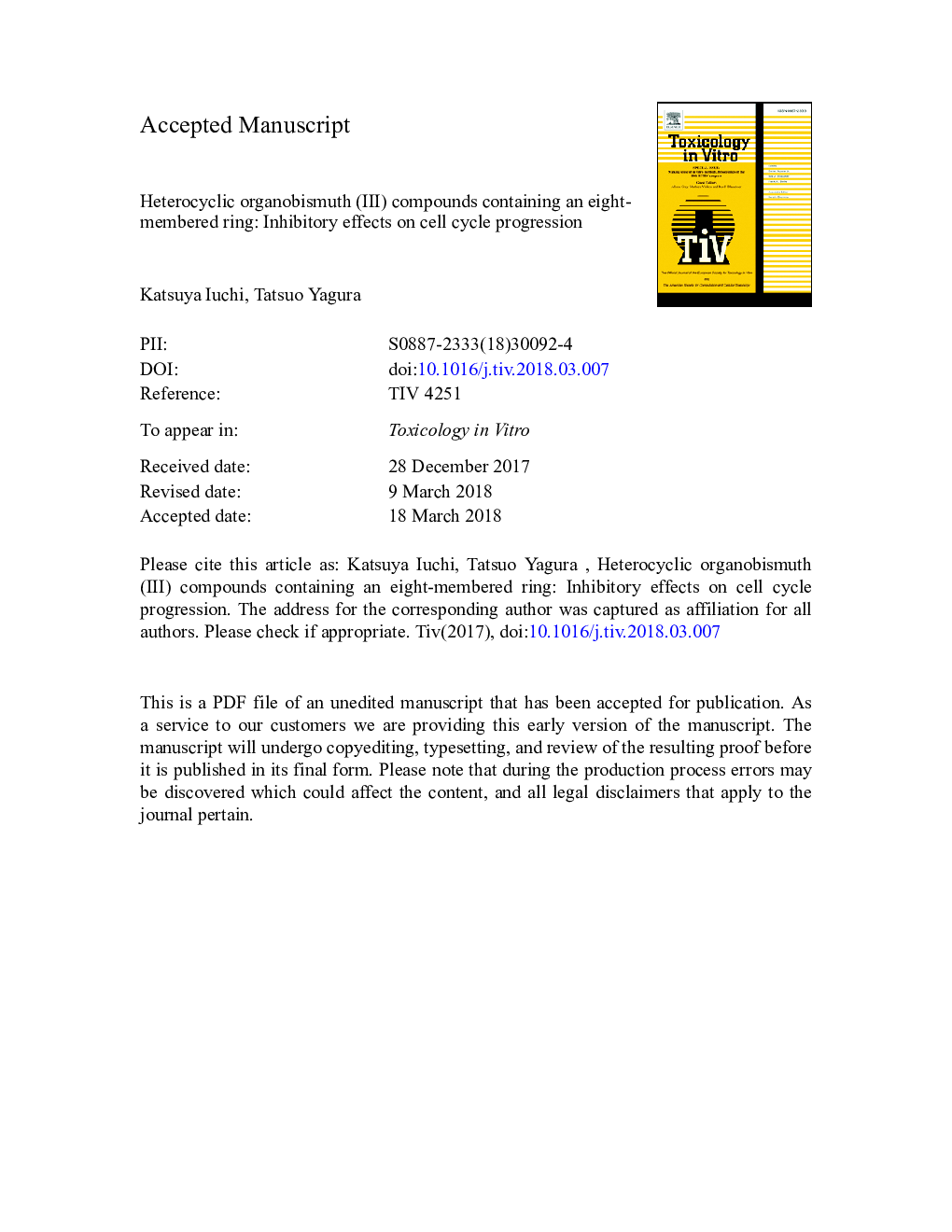| Article ID | Journal | Published Year | Pages | File Type |
|---|---|---|---|---|
| 8553947 | Toxicology in Vitro | 2018 | 34 Pages |
Abstract
We previously showed that heterocyclic organobismuth compounds have excellent antimicrobial and antitumor potential. These compounds structurally consist of either six- or eight-membered rings. Previous research has shown that bi-chlorodibenzo[c,f][1,5]thiabismocine (Compound 3), an eight-membered ring, induced G2/M arrest via inhibition of tubulin polymerization in HeLa cells. Additionally, N-tert-butyl-bi-chlorodi-benzo[c,f][1,5]azabismocine (Compound 1), another eight-membered ring, exhibited higher cytotoxicity than Compound 3 against several cancer cell lines, including HeLa and K562. Finally, bi-chlorophenothiabismin-S,S-dioxide (Compound 5), a six-membered ring, exhibited lower antitumor activity than eight-membered ring compounds. In this study, we investigated the antimitotic activity of Compounds 1 and 5 in HeLa cells. At low concentrations, (0.1 and 0.25â¯Î¼M), Compound 1 inhibited cell growth and arrested the cell cycle in mitosis. However, 0.5â¯Î¼M Compound 1 exhibited no antimitotic activity. Conversely, Compound 5 weakly inhibited cell growth and did not markedly arrest the cell cycle. Flow cytometry showed that Compound 1 arrested the cell cycle at G2/M, resulting in apoptosis. Compound 1 inhibited tubulin polymerization as revealed by a cell-free assay, and both Compounds 1 and 3 inhibited microtubule spindle formation and chromosome alignment during prometaphase. These results suggest that eight-membered ring-containing organobismuth compounds can induce mitotic arrest by perturbing spindle dynamics.
Keywords
DMEMMTOCDAPITBSEGTAPVDFPBS4′,6-diamidino-2-phenylindoleDulbecco's modified Eagle Mediumethylene glycol-bis(β-aminoethyl ether)-N,N,N′,N′-tetraacetic acidsodium dodecyl sulfate-polyacrylamide gel electrophoresisSDS-PAGESpindle checkpointTris-buffered salineMitotic arrestPhosphate-buffered salinemicrotubule-organizing centerPolyvinylidene fluoride
Related Topics
Life Sciences
Environmental Science
Health, Toxicology and Mutagenesis
Authors
Katsuya Iuchi, Tatsuo Yagura,
